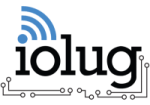Bylaws
I. The purposes of the Organization are:
A. To foster an environment for individuals to network and grow professionally in the area of librarianship
B. To provide communication channels for members to share current technology trends in libraries
C. To provide continuing education opportunities on current technologies that impact libraries
II. The Board of Directors
A. Membership: The Board of Directors shall be members of the organization and consist of the President, the President-Elect, the Secretary, the Treasurer, the Past-President, two Directors-at-Large, the Marketing Coordinator, the Membership Officer, and the Newsletter Editor. The Website Editor and the Chair of the Program Committee are ex-officio members (as defined by these Bylaws).
B. Terms
1. Terms of office are as follows:
a. The terms of office for the President, President-Elect and Past-President are one year.
b. The terms of office for the Secretary, Treasurer, Directors-at-Large, Marketing Coordinator, Newsletter Editor, Membership Officer, and Website Editor are two years.
c. Terms for Directors-at-Large will be staggered so that they will not all be newly elected in any one year.
2. Terms commence on July 1st following the election.
3. The Secretary, Treasurer, Directors-at-Large, Marketing Coordinator, Membership Officer, Newsletter Editor, and Website Editor may succeed themselves.
4. The President, in consultation with the Board, makes appointments for the remaining terms of any vacant office.
C. Duties
1. All Board members serve both the Board of Directors and the Organization.
2. Duties of the Board members are both traditional (Robert’s Rules of Order) and as assigned by these documents.
3. Board of Directors:
a. The President is the chief executive officer. The President prepares the annual report by August 1st each year.
b. The President-Elect functions as the vice-president, keeps governance documents up-to-date, and automatically becomes President the following year.
c. The Secretary keeps minutes of both the membership and Board meetings, handles the correspondence as needed, and distributes the annual report and other materials to members as needed. The Secretary is responsible for maintaining the Handbook and for collecting and maintaining the archival material throughout the year. At the conclusion of the fiscal year, the Secretary will deposit the archival materials with the designated representative of the Ball State University Archives and Special Collections.
d. As the chief financial officer, the Treasurer maintains financial records, and provides reports. Checks for authorized expenditures may be signed either by the Treasurer or the President.
e. The Past-President and the Directors-at-Large assist the officers and have duties as assigned.
f. The Marketing Coordinator collaborates with the Website Editor, Membership Officer, News Editor, Program Committee, and the IOLUG Board to develop branding and marketing strategies.
g. The Membership Officer works with the Secretary and Treasurer in recruiting, maintaining a membership list, and publishing a directory.
h. The News Editor publishes at least two issues per year, containing notices and details of programs, membership meetings, highlights of board meetings, the proposed slate for the board of directors, and other items of interest.
4. Ex-Officio Members:
a. The Chair of the Program Committee and the Website Editor serve as ex officio members with full rights and privileges except for voting.
b. The Website Editor maintains the organization’s website and serves as the Chair of the Web Committee.
D. Elections
1. A single slate of candidates will be mailed to the membership at least two weeks prior to the election.
2. Other qualified members who agree to serve may be nominated from the floor.
3. Election is by plurality. Only first place ties will be voted again. After three ties, the Board alone will vote.
III. Meetings
A. Definitions
1. A quorum is the number of members present at the meetings.
2. A majority (or simple majority) is anything over 50% of those voting.
3. A two-thirds majority is at least 66% of those voting.
4. A plurality is the highest number of votes among three or more options, but usually less than a majority.
B. Voting
1. Only currently paid-up members may vote.
2. Voting is by voice at meetings, unless otherwise stated or requested.
3. If voting by mail is requested, it is done with at least two weeks’ notice prior to the postmark deadline.
4. For more than two options, election is by plurality.
5. Voting by proxy is not permitted.
IV. Committees: Standing and Ad Hoc committees are established according to the Standing Rules.
V. Amendments
A. Amendments to the Constitution and Bylaws must be prepared in writing and put in the hands of members at least two weeks prior to the date of voting. A two thirds majority of those voting is required for passage.
B. The Standing Rules may be amended by a simple majority with or without prior notice.
C. Unless otherwise stated in the amendment, all changes become effective at the close of the meeting of approval.
D. The President-Elect updates the official copy of these governance documents within 30 days of amendment.
As passed at the business meeting, Fall Conference 1993.
Revised at the business meeting, Spring Conference 1997.
Revised at the business meeting, Fall Conference 1999.
Revised at the business meeting, Spring Conference 2006.
Revised at the business meeting, Spring Conference 2010.
Approved at the IOLUG business meeting, Spring Conference, May 6, 2011.
Revised at the business meeting, Spring Conference, April 27, 2012.
Revised at the business meeting, Spring Conference, May 5, 2013. Revised at the business meeting, Fall Conference, October 30, 2014.
